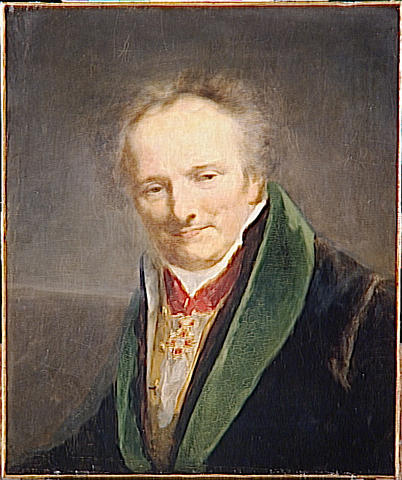The directory «Plots of stamps in the catalogue»
Denon Dominique Vivant
(1747—1825)

Dominique Vivant, Baron de Denon, French artist and archaeologist, was born at Chalon-sur-Saône on the 4th of January 1747. He was sent to Paris to study law, but he showed a decided preference for art and literature, and soon gave up his profession. In his twenty-third year he produced a comedy, Le Bon Père, which obtained a succès d'estime, as he had already won a position in society by his agreeable manners and exceptional conversational powers. He became a favorite of Louis XV, who entrusted him with the collection and arrangement of a cabinet of medals and antique gems for Madame de Pompadour, and subsequently appointed him attaché to the French embassy at St. Petersburg. On the accession of Louis XVI Denon was transferred to Sweden; but he returned, after a brief interval, to Paris with the ambassador M. de Vergennes, who had been appointed foreign minister. In 1775 Denon was sent on a special mission to Switzerland, and took the opportunity of visiting Voltaire at Ferney. He made a portrait of the philosopher, which was engraved and published on his return to Paris. His next diplomatic appointment was to Naples, where he spent seven years, first as secretary to the embassy and afterwards as chargé d'affaires. He devoted this period to a careful study of the monuments of ancient art, collecting many specimens and making drawings of others. He also perfected himself in etching and mezzotinto engraving. The death of his patron, M. de Vergennes, in 1787, led to his recall, and the rest of his life was given mainly to artistic pursuits. On his return to Paris he was admitted a member of the Academy of Painting. After a brief interval he returned to Italy, living chiefly at Venice. He also visited Florence and Bologna, and afterwards went to Switzerland. While there he heard that his property had been confiscated, and his name placed on the list of the proscribed, and with characteristic courage he resolved at once to return to Paris. His situation was critical, but he was spared, thanks to the friendship of the painter Jacques-Louis David, who obtained for him a commission to furnish designs for republican costumes. When the Revolution was over, Denon was one of the band of eminent men who frequented the house of Madame de Beauharnais. Here he met Napoleon Bonaparte, to whose fortunes he wisely attached himself. At Bonaparte's invitation he joined the expedition to Egypt, and thus found the opportunity of gathering the materials for his most important literary and artistic work. He accompanied General Desaix to Upper Egypt, and made numerous sketches of the monuments of ancient art, sometimes under the very fire of the enemy. The results were published in his Voyage dans la basse et la haute Égypte (2 vols. folio, with 141 plates, Paris, 1802), a work which crowned his reputation both as an archaeologist and as an artist. In 1804 he was appointed by Napoleon to the important office of director-general of museums, which he filled until the restoration in 1815, when he had to retire. He was a devoted friend of Napoleon, whom he accompanied in his expeditions to Austria, Spain and Poland, taking sketches with his wonted fearlessness on the various battlefields, and advising the conqueror in his choice of spoils of art from the various cities pillaged. After his retirement he began an illustrated history of ancient and modern art, in which he had the cooperation of several skilful engravers. He died at Paris on the 27th of April 1825, leaving the work unfinished. It was published posthumously, with an explanatory text by Amaury Duval, under the title Monuments des arts du dessin chez les peuples tant anciens et que modernes, recueillis par Vivant Denon (4 vols. folio, Paris, 1829). Denon was the author of a novel, Point de lendemain (1777), of which further editions were printed in 1812, 1876 and 1879.
Ras al-Khaima, 1970, Napoleon visits the Louvre
Upper Volta, 1969, First presentation of the Legion of Honour